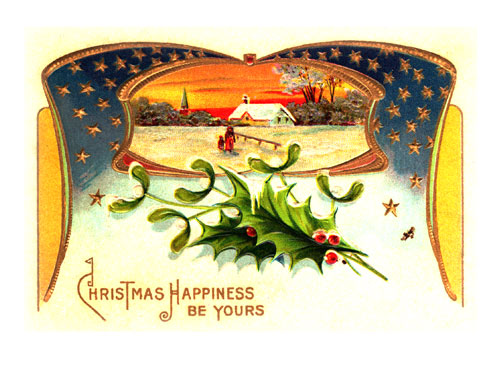This vintage postcard is from World War I days when the folks at home would send a card like this overseas to their loved ones, reminding them of what their sacrifice means: home, peace, liberty, faith.
This is an example of the patriotic postcards that were created for all holidays during WWI. This Christmas postcard with the American flag behind a snowy, wintery, homestead is a very nostalgic and patriotic expression of the warmth of home and family at Christmas time.
Notice the little flag over the “C” in Christmas is a flag like that used during WWI to signal.
This communication system was developed by the United States Army Signal Corps, founded in 1860, and responsible since the Civil War for developing and maintaining communications systems to aide military units including intelligence and weather forecasting systems.
The Signal Corp was created when the Army decided to adopt a system created by an army doctor, Albert James Myer. He proposed to the army the system of using flags to visually signal between military units known as aerial telegraphy or by its nickname of “wig-wag.”
The Signal Corp went on to test and use different types of communication including aerial balloons and electric telegraph, then the first airplanes, heliographs, and later short wave radios. With the introduction of cameras, these flying machines were used to take the first aerial photographs during war time.
The Army Signal Corp has aided in developing and testing many communications devices of the years since 1860 and even created the beginnings of the National Weather Service.
Today, communications are handled by each brand of the military, but the Army Signal Corp is still in existence and aides greatly in our war efforts overseas. The Signal Corps is currently responsible for the Warfighter Information Network – Tactical (WIN-T) in the Iraq and Afghanistan military efforts.
The Signal Corp is constantly working on state-of-the-art communications systems; testing and developing them for further use by all the military branches.
Mary Roberts Rinehart wrote many books set in the atmosphere of World War I, in which she herself was a the front lines as a Red Cross representative and a journalist for the Saturday Evening Post. In her book, Bab: A Sub-Deb, the young pre-debutantes, or sub-debs, get into quite a bit of mischief trying to learn and use this “wig-wag” flagging.
